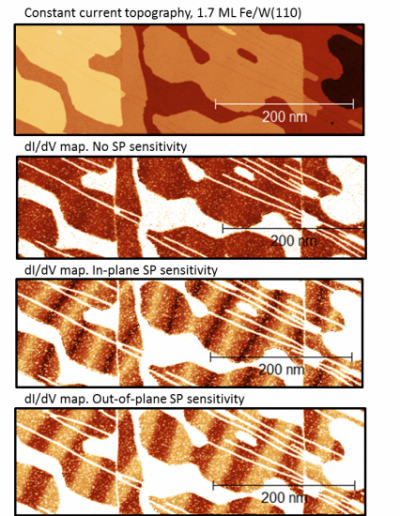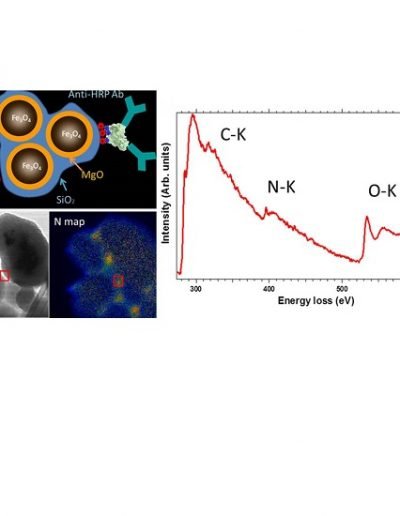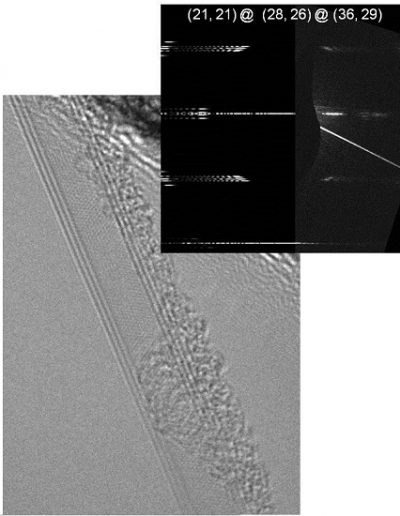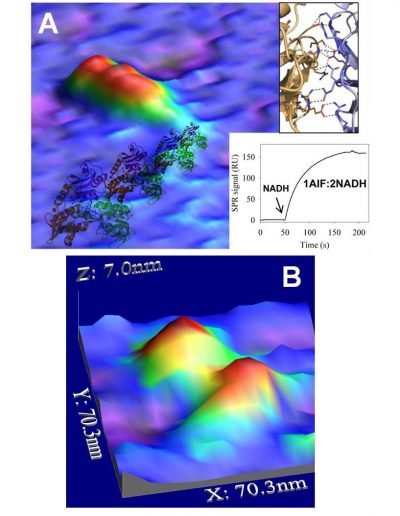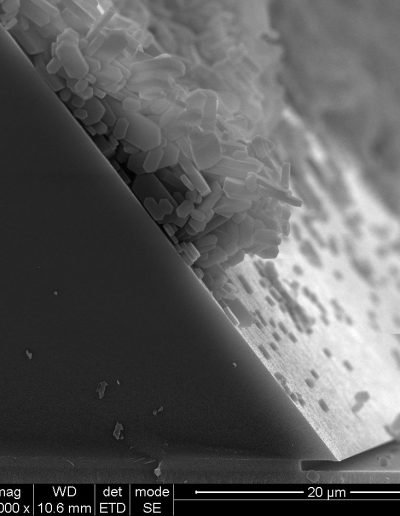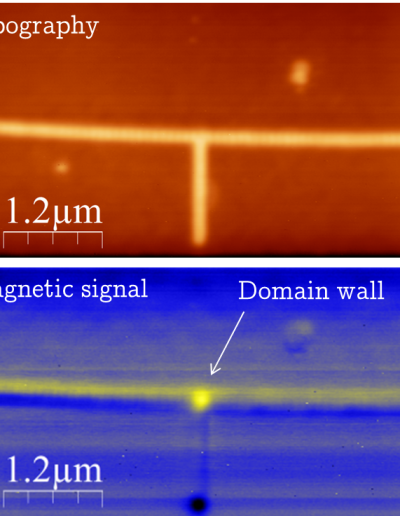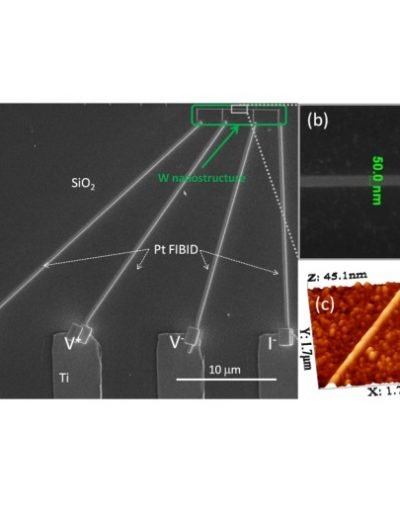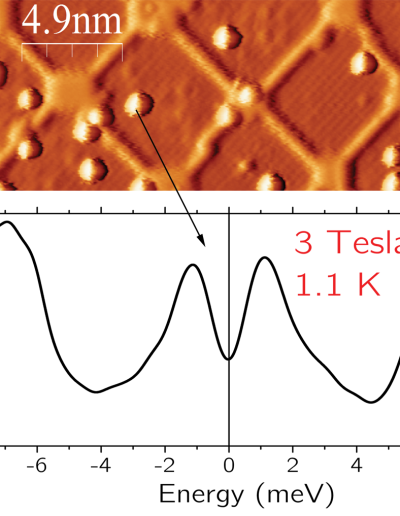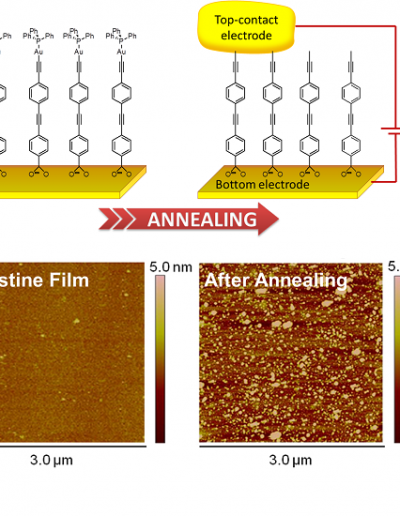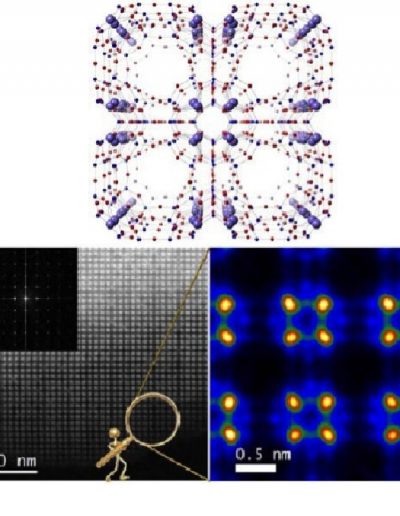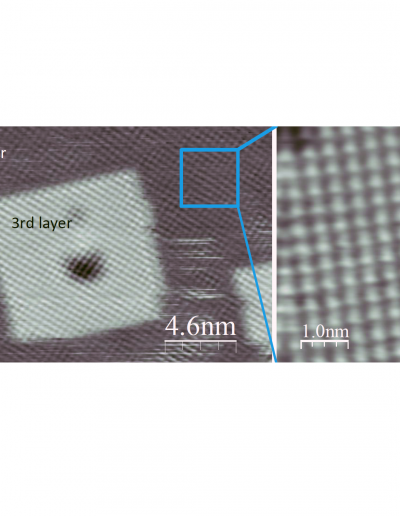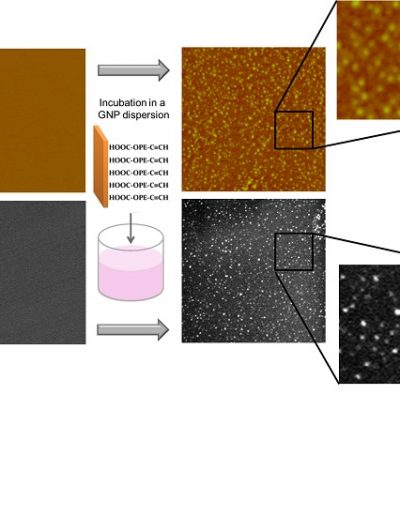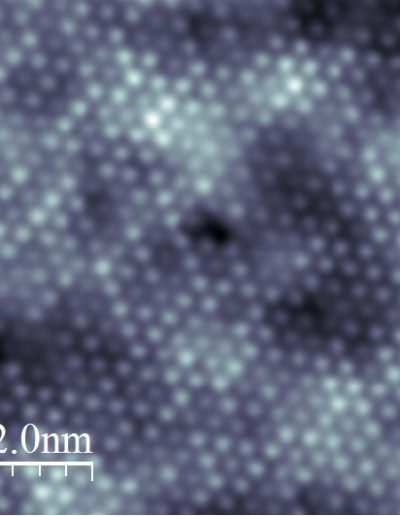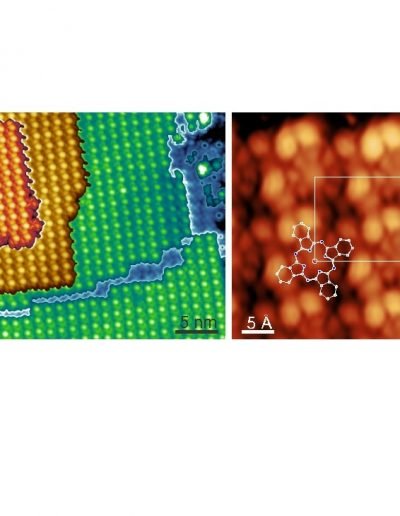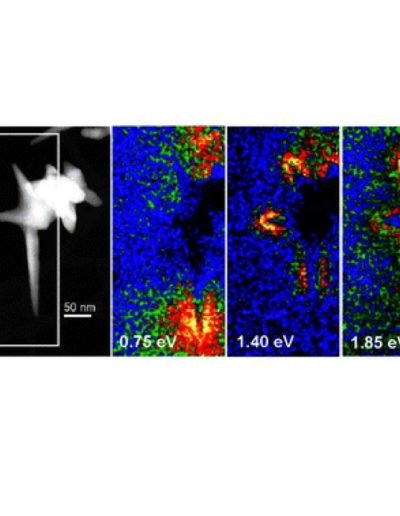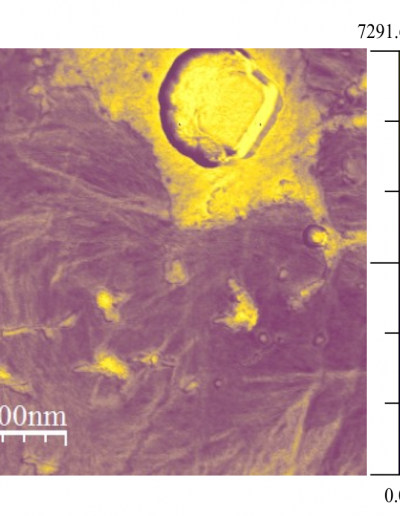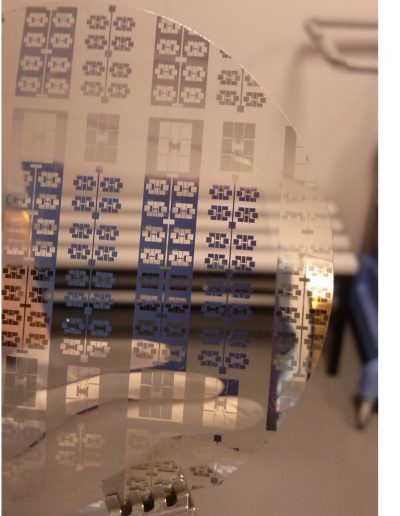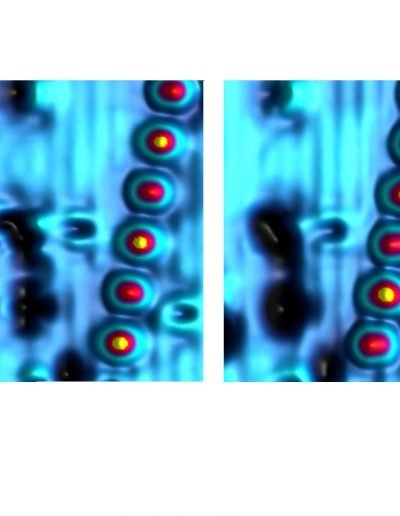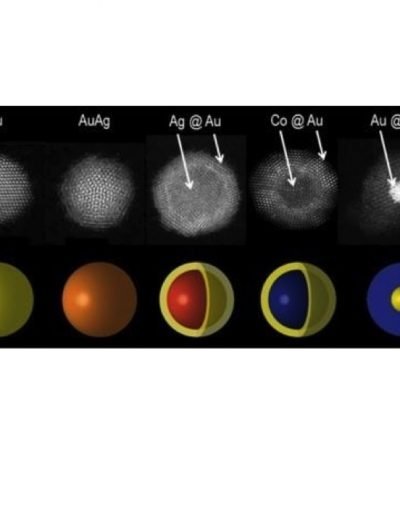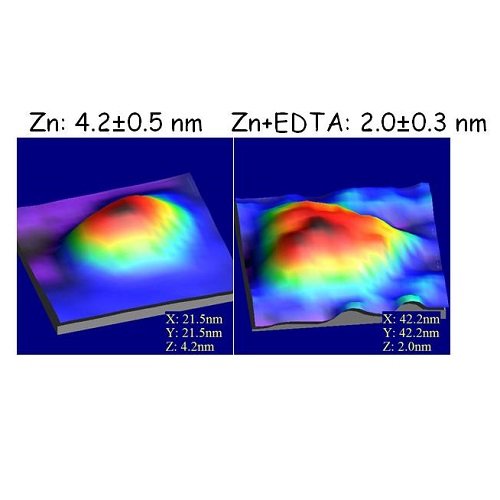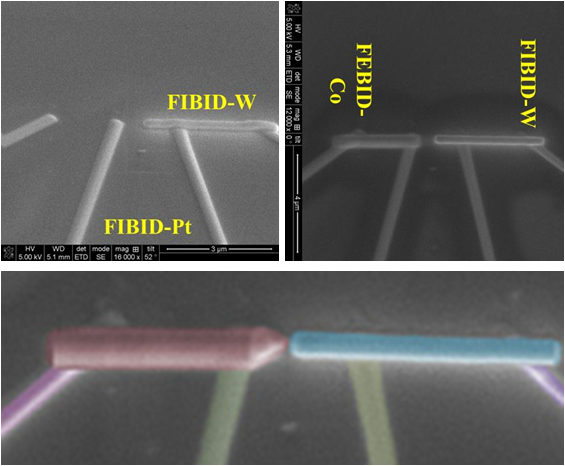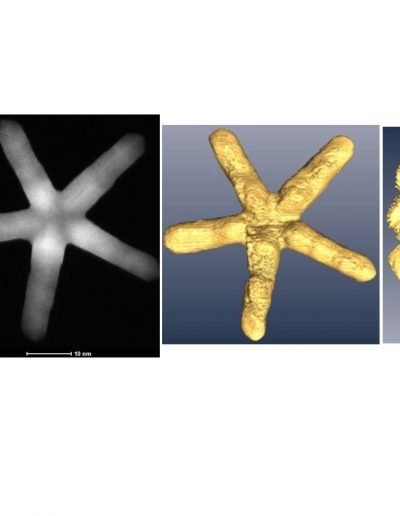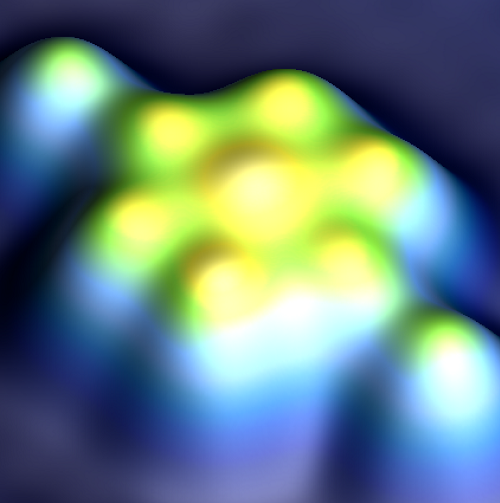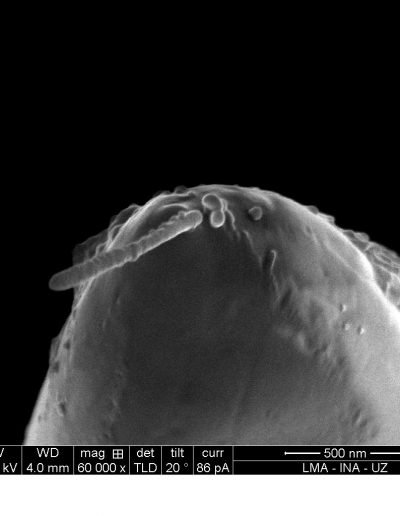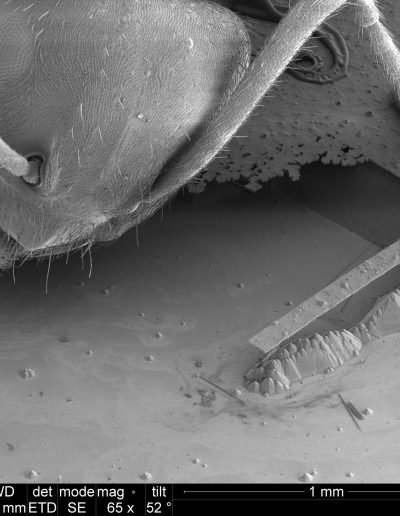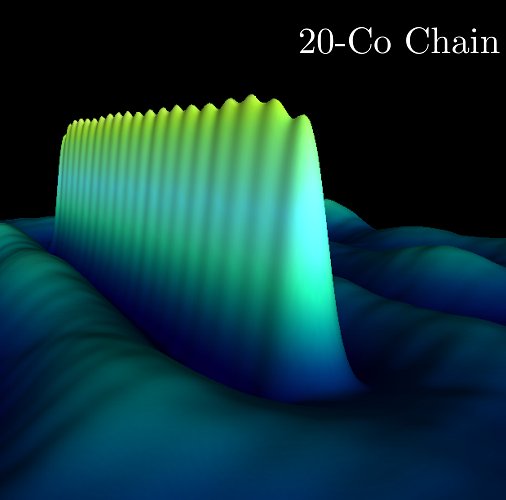Galería LMA
Galería LMA
Arenal4_550x5501
Spatially-Resolved EELS Analysis of the Antibody Distribution on Bio-functionalized Magnetic Nanoparticles. Courtesy of: Raul Arenal
Enzymatic-mechanisms_500x500
Enzymatic mechanisms: fluid Atomic Force Microscopy revealed that the coenzyme-mediated A) monomer− B) dimer transition of the human apoptosis-inducing factor modulates the conformation of the proapoptotic domain, as well as its mechanism as reductase: a key information in the understanding of the physiological role of hAIF in the cellular life and death cycle. Courtesy of: Ferreira et al. Biochemistry, 53, 4204-4215 (2014).
Bismuth-nanowire-with-four-electrical-contacts-by-FIBID
Bismuth nanowire with four electrical contacts by FIBID Courtesy of: Soraya Sangiao, Noelia Marcano, José María De Teresa
DNA-protein_500x500
DNA-protein: Sequential binding model proposed for FurA-PfurA using fluid Atomic Force Microscopy. This is the first binding model of a protein regulator to inactivate a promoter. DNA bending contributes at the first steps of FurA repression promoting the recruitment of new molecules resulting in a fine regulation in the Fur-dependent cluster associated genes. Courtesy of Pallarés et al. BBA, 1844, 623-631 (2014).
Graphene-patterning-and-nanocontacting
Graphene patterning and nanocontacting Courtesy of: Inés Serrano, José María De Teresa
Structural-studies2_500x500
Structural studies: fluid Atomic Force Microscopy showed that the structure of the apoferritin protein loaded with magnetic oxides –visualized by TEM) is very similar to the natural holoferritin, and both differ from the empty protein. Courtesy of Martínez-Pérez et al. Nanotechnology, 21, 465707 (2010)
W-BASED-SUPERCONDUCTING-NANOWIRE
W-based superconducting nanowire Courtesy of: Rosa Córdoba, Javier Sesé, José María De Teresa
Pic1_Co_Cu2N
Energy resolution in Co atoms on Cu2N/Cu(001) Courtesy of: Jose M. Martínez, David Serrate
Imagen1-LMA_Pilar_550x500
Thermal Induced Decomposition of an Organometallic Monolayer for the fabrication of the top contact electrode in molecular electronic devices Courtesy of: L.M. Ballesteros, J. Cortés, S. Martín, P. Cea et al.
Untitled21
Cd atoms loaded into LTA zeolite. Courtesy of: Alvaro Mayoral, Jennifer E. Readman, Paul A. Anderson
Imagen2-LMA_Pilar_550x550
Formation of C-gold bonds by incubation of gold nanoparticles into a terminal alkyne functionalized monolayer Courtesy of: H. Osorio, L.M. Ballesteros, I. Gascón, P. Cea, S. Martín et al.
Pic7_Bi2Se2Te
Atomic resolution of topological insulator Bi2Se2Te Courtesy of: Mari Carmen Martínez, David Serrate
Untitled51
Plasmonic response of gold nanostars. Courtesy of: Alvaro Mayoral, Cesar Magen, Miguel Jose-Yacaman
imagenINA-Laura-Lopez1
AFM: Mechanical properties of polymers with inorganic additives. Courtesy of: Laura Lopez-Figueras et al
Camera 360
Lithography on a flexible and transparent substrate Courtesy of: Patricia Peinado, Rubén Valero, José María De Teresa
Pic4_co_chain-bits1
SP-STM, encoding binary information with single Co atoms: 101010 (left) and 010101 (right) Courtesy of: Maria Moro, David Serrrate.
Untitled41
Tailored engineering of core@shell and core@shell@shell nanoparticles. Courtesy of: A. Mayoral, D. Llamosa, M. Ruano, L. Martínez, E. Roman, M. García-Hernández, Y. Huttel.
Structural-studies
Structural studies: The nonstructural NS3 protein from the hepatitis C virus is responsible for processing the non-structural region of the viral precursor polyprotein in infected hepatic cells. Fluid Atomic Force Microscopy shows how NS3 needs a structural Zn ion to fold correctly, otherwise is an extended protein. Courtesy of Int. J. Mol. Sci., 14, 13282-13306 (2013)
Ferromagnet-Superconductor-nanocontact
Ferromagnet-Superconductor nanocontact. Courtesy of: Soraya Sangiao, José María De Teresa
Pic3_-Co-Flower1
Artificial Co cluster made by atomic manipulation Courtesy of: Maria Moro, David Serrrate.
COBALT-NANOWIRE-ON-TIP11
Cobalt nanowire on TIP Courtesy of: Isabel Rivas, Amalio Fernández-Pacheco, José María De Teresa
Imagen1-Arenal1
Reshaping Hollow Gold Nanoparticles into Nanorings Courtesy of: Raul Arenal, Martin Prieto, Manuel Arruebo et al.

Universidad de Zaragoza

Ministerio de Ciencia, Innovación y Universidades

Actividad de I+D+I realizada por la Universidad de Zaragoza cofinanciada por el Gobierno de Aragón
Laboratorio de Microscopías Avanzadas
Somos una iniciativa singular a nivel nacional e internacional. Ponemos a disposición de la comunidad científica e industrial las infraestructuras más avanzadas en microscopía electrónica y de sonda local para la observación, caracterización, nanoestructuración y manipulación de materiales a escala atómica y molecular.
Datos de Contacto
Campus Río Ebro, Edificio Edificio I+D+i
Enlaces Destacados
© 2023 LMA| Página web desarrollada por o10media



